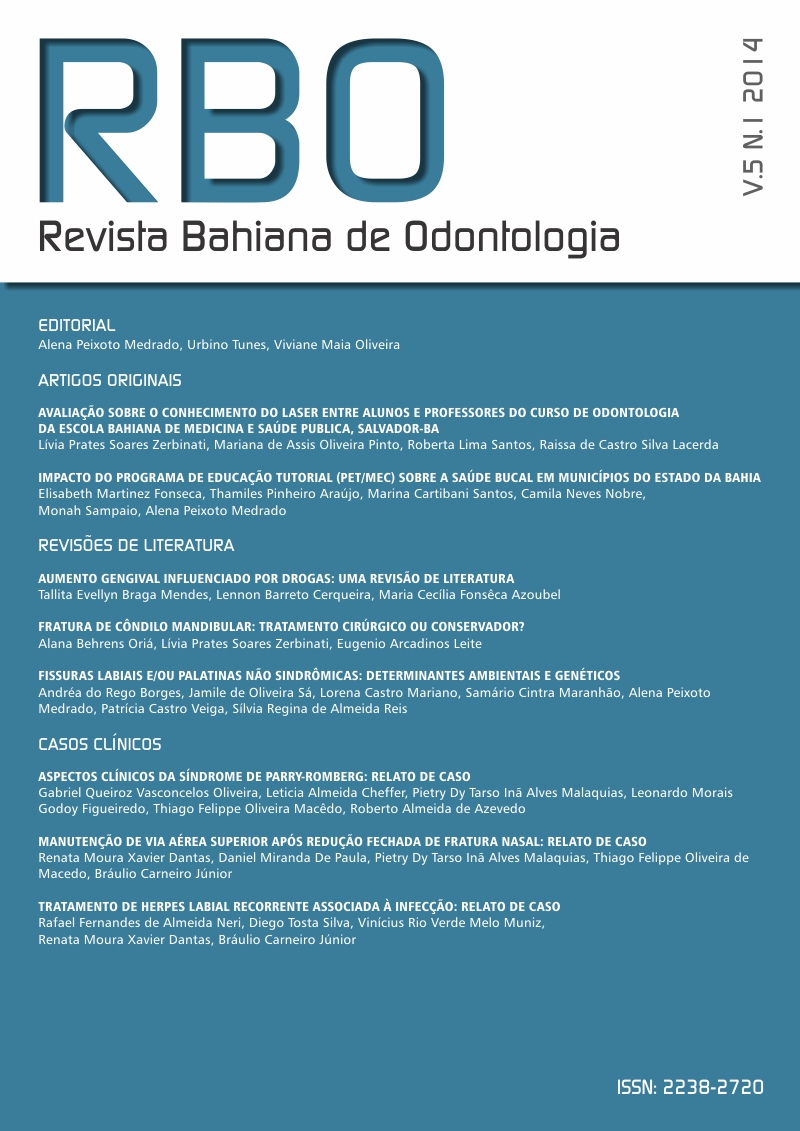MANDIBULAR CONDYLAR FRACTURES IN PEDIATRIC PATIENT: TO OPEN OR NOT TO OPEN?
DOI:
https://doi.org/10.17267/2596-3368dentistry.v5i1.242Keywords:
Mandibular condyle, Condylar fractures, Epidemiology, ChildAbstract
The type and severity of trauma injury; and the etiology of facial fractures is different according to the population studied. With the more stringent traffic laws, there was a reduction of facial fractures caused by automobiles accidents, but it still appears as the main cause and the prevalence of male and facial fractures. These fractures of the mandible condyle correspond 25-35% of mandible fractures diagnosed through radiographs projection Towne, panoramic and computed tomography. The same feature as the main etiological factors trauma by direct assault, car accidents, bicycle fall, fall from height and injury by firearms. Diagnosis of condylar fractures in pediatric patients should be very strict by the difficulty of obtaining information about the history of trauma, especially due to age of the patients affected. The etiology of condylar fractures in pediatric patients varies according to the stage of the child’s life (the 0-6 year of life and from the 6th year of life). The treatment of these fractures, especially in pediatric, when mishandled can cause permanent deformity. The treatment can be surgical or conservative, and should be made after the analysis of the age and gender of the patient, etiology and clinical conditions of fracture, time from the trauma, and dental occlusion. In pediatric patients, in most cases, the of first choice treatment is the conservative approach, because the ability of bone growth and bone remodeling that occurs.



